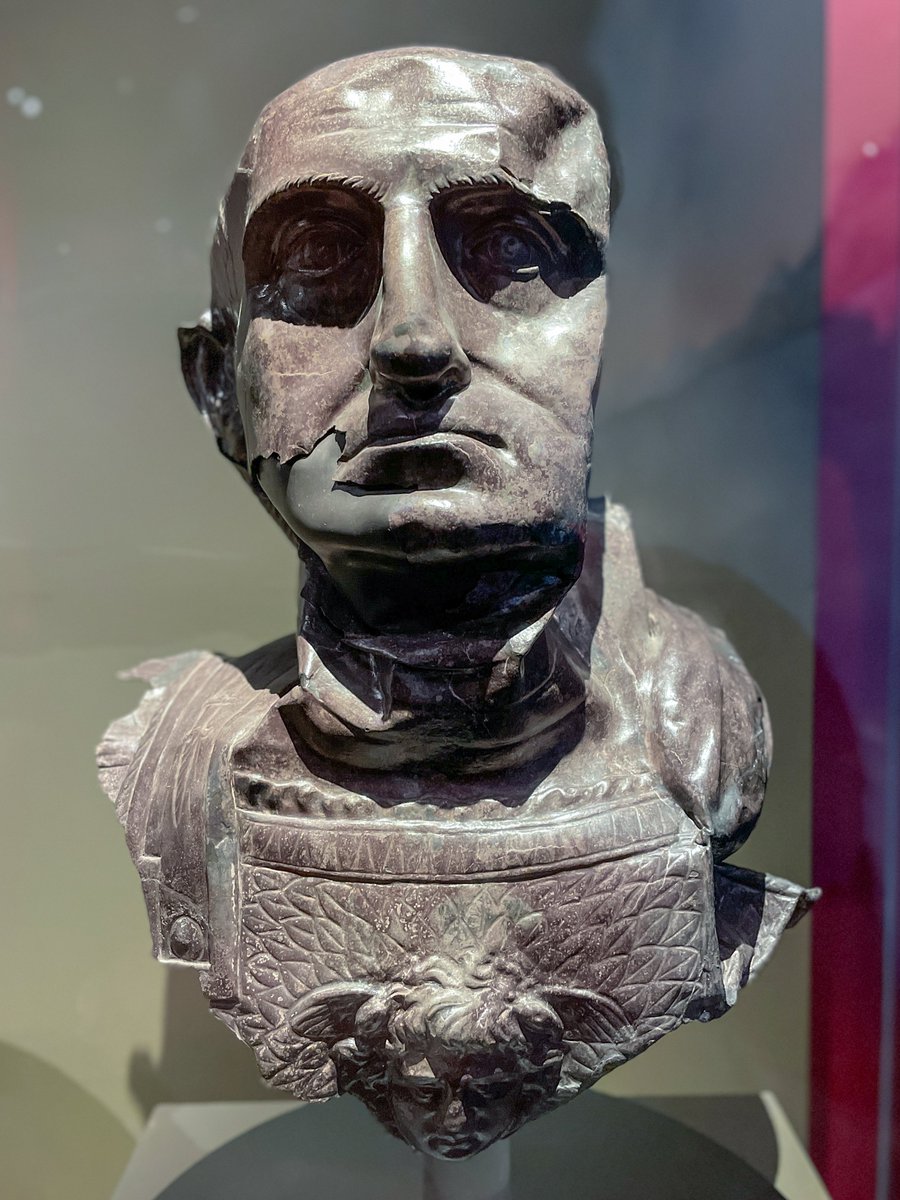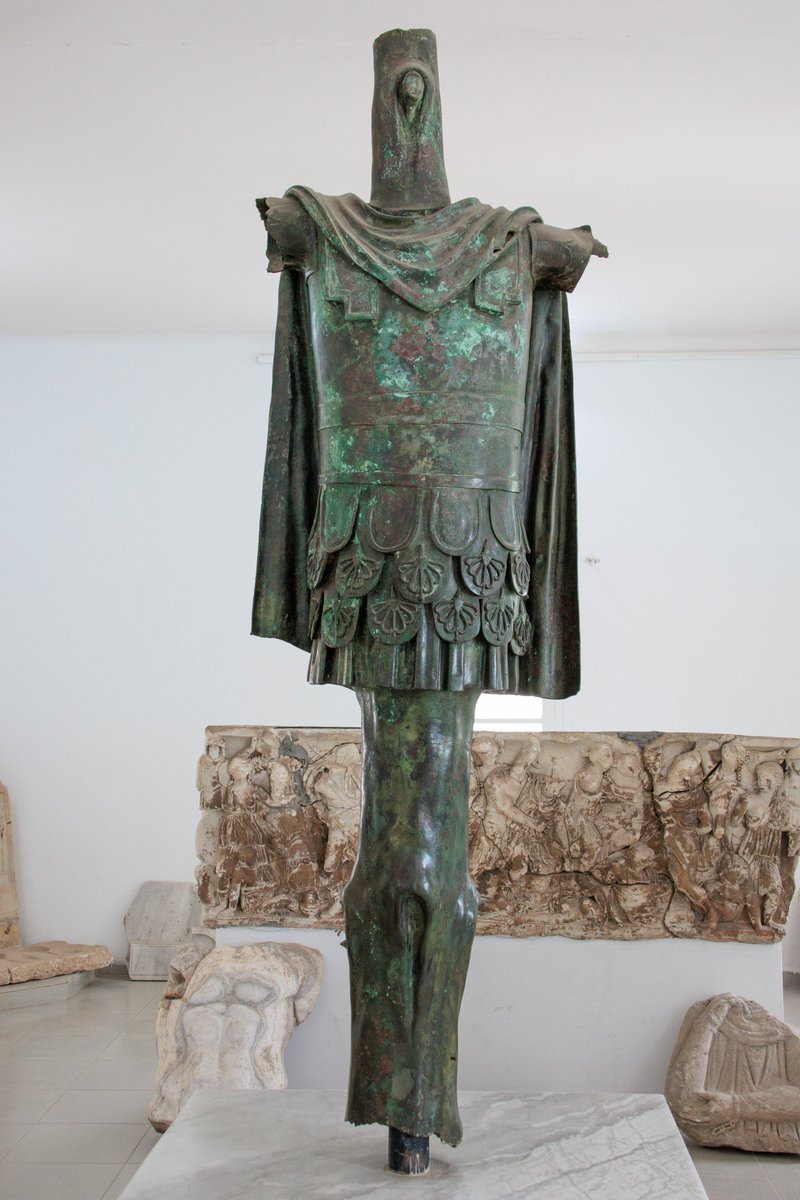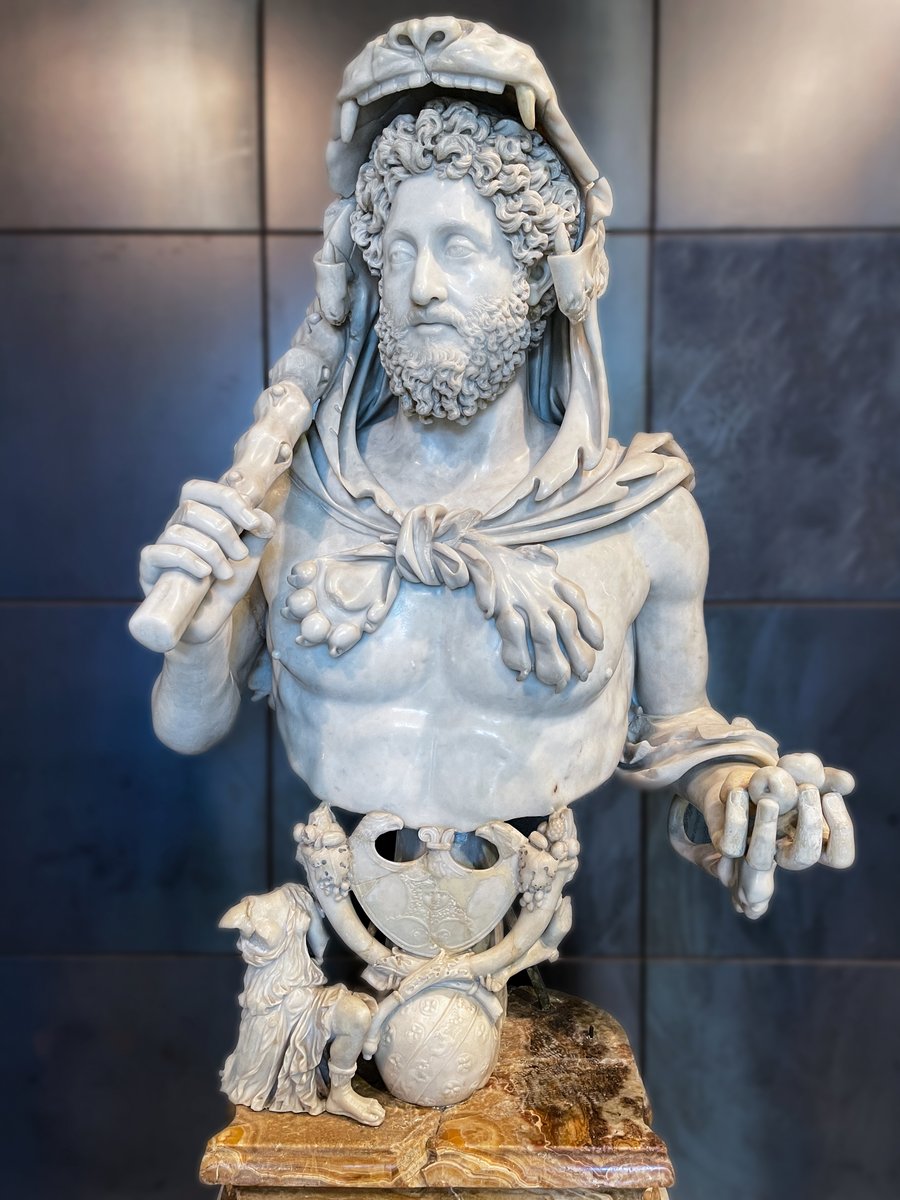1) A Roman grave memorial with a dark secret: this funerary altar was intended as a loving dedication to a child by grieving parents ..but later became a cursed testament of bitterness and betrayal. On the surface, it appears a finely carved but largely normal Roman gravestone... 

2) The memorial is dedicated to the young Junia Procula, whose death has left her parents "wretched with grief". With an exactness that shows their love, it states she lived "eight years, eleven months and five days".. 

3) 8-year-old Junia is shown in an affectionate portrait above, with ornately curled hair fashionable in the late 1st century; her image placed prominently in the panel usually reserved for the inscription - clearly a beloved child. But looking closer we see something is amiss.. 

4) As she predeceased her mother and father, it states a hope that one day "the bones of the parents will rest in the same place as the daughter." The monument is dedicated by her parents Marcus Junius Euphrosynus and -----------. The name of Junia's mother has been erased. 

5) Looking for answers we might explore Junia's richly decorated memorial further. We see festoons of fruit and flowers, eagles with spread wings, mythological creatures like the griffin and sphinx, horned heads of Jupiter Ammon. But on the back, we find something more sinister.. 

6) On the rear, undecorated side of the monument is a secret inscription. Carved by Junia's father at a later date to the front, this inscription is not a loving dedication but a chilling curse on Junia's mother; its ominous and revealing text is worth reading in full... 

7) "Here is written an everlasting curse on the freedwomen Acte, an evil, heartless poisoner and deceiver. Let nails and rope bind her neck and boiling pitch burn her wicked heart. She was freed from slavery without charge but then ran off with her secret lover... 

8) "..She tricked me as I lay ill in bed and stole away with my slave girl and boy that assisted me. She left me, her patron, a despondent old man, abandoned and robbed. Let this same curse also fall on Hymnus and all others who follow Zosimus." 

9) If we take Marcus at his word, the story is a cruel one: at some point after they had buried their daughter and while he was suffering ill-health, the wife he had freed from slavery disappeared with her lover, taking his slaves with her. There is even an implication that... 

10) ..Acte may even have been poisoning Marcus resulting in his poor health, with his description of her as a "venenaria" (poisoner, poisonmixer). It has been suggested that Zosimus is likely the man that Acte has run away with, while Hymnus might be their slave boy.. 

11) A curse or 'defixio' like this was usually written on a lead tablet and deposited in a secret place, buried or placed in sacred pools. Curses on graves memorials are extremely rare, with the belief a defixio being openly displayed would negate the curse's power... 

12) Marcus may have wanted to publicly condemn his wife Acte, though his curse is placed on the back of the monument which may once have been set against the wall of a tomb. In this way, the secret curse lurking behind the tender gravestone was very real.. 

13) Today the cursed grave of Junia may seem strange but it tells an intensely human story of a real family broken apart by tragedy, grief and betrayal - the resulting pain and bitterness of Marcus, an all too human reaction, preserved forever. (END) 

The tragic grave memorial of Junia Procula today resides in the Uffizi Galleries, Florence. uffizi.it/en/artworks/al…
• • •
Missing some Tweet in this thread? You can try to
force a refresh






















